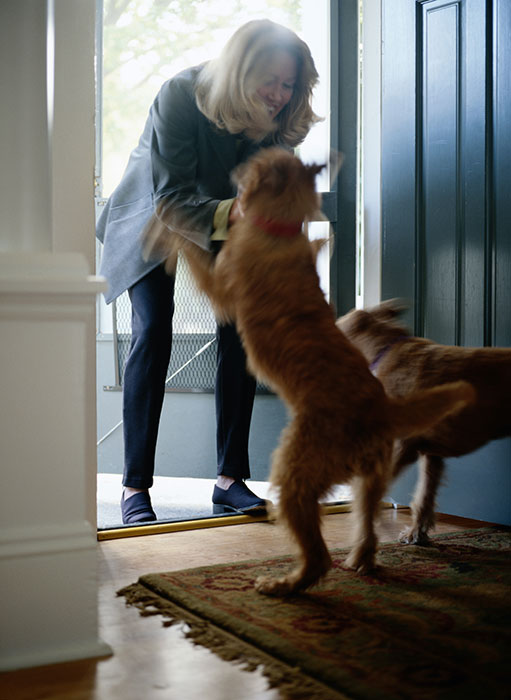Pet Rules and Restrictions for Condominiums and HOAs
September 2, 2010 • 3 min read
 Pets are wonderful. They’ll provide a lifetime of loyalty and companionship and never ask for anything in return–except food, love, walks, vet check-ups, training, grooming, and . . . . Well, okay, pets can be a lot of work. And when pet owners are unwilling to properly care for and clean up after their pets, they can become a real nuisance to a condominium or homeowners’ association. Does the board have the authority to ban animals from the association altogether? Even if it does have the power to do so, is it a smart move?
Pets are wonderful. They’ll provide a lifetime of loyalty and companionship and never ask for anything in return–except food, love, walks, vet check-ups, training, grooming, and . . . . Well, okay, pets can be a lot of work. And when pet owners are unwilling to properly care for and clean up after their pets, they can become a real nuisance to a condominium or homeowners’ association. Does the board have the authority to ban animals from the association altogether? Even if it does have the power to do so, is it a smart move?
Before Dealing with HOA Pet Rules
There are a wide range of variables to consider when dealing with pet issues in your association. Before the board even considers new rules, be sure to look closely at your current declaration and rules.
- Do they prohibit pets altogether, impose restrictions on the number, size or type of pets permitted, or do they fail to address pets at all?
- If the board would like to change the pet restrictions or rules, what process must be followed?
- Can the board adopt a new rule without a vote of the owners, or must the owners approve an amendment to the declaration?
Once these questions have been answered, the board should be sure that it has fully thought through the impact of a rules change. Too often, associations adopt an arbitrary rule only to find that it has unintended consequences.
Unintended Consequences of Adding a Pet Weight Limit or Banning Pets in Condos
For instance, a common approach is to ban dogs over a certain weight limit. But is a 35 pound dog really more troublesome than a 30 pound dog? And how does one enforce this restriction? Does the board really want to go around requiring dogs to be weighed? Will the board be willing to have a perfectly well-behaved dog removed because, (like many of us), it has gained weight as it aged?
Another trap boards fall into is banning dogs and/or cats altogether. I won’t say that this is always a bad move, because if the owners want their community to be pet-free, then they have the right to enact rules or restrictions as specified in their governing documents to accomplish that goal. The unintended consequence of this action, however, is that the owners may severely limit the pool of potential buyers for their homes. According to a Gallup poll, 44% of Americans own a dog, and 29% own a cat. Only 40% of Americans do not own any type of pet. By banning pets, the Association eliminates a large group of potential home buyers in an already difficult market. The Association must also understand that under state and federal law, service animals cannot be prohibited for disabled owners.
Five Points Boards Should Consider Before Adding New or Additional Pet Restrictions
While no set of rules will fit every association, a board considering new or additional pet restrictions should consider these points:
- Unless there is a designated, enclosed area for pets to run free, the rules should require all pets to be on a leash and attended by their owner when outside a unit.
- Think carefully before imposing a size limit on dogs. A large dog can be quiet and well-behaved just as a small dog can be loud and disruptive.
- Be specific about what types of pets are permitted and/or prohibited. Most of us think of dogs and cats as typical household pets but, for some people, pot-bellied pigs, snakes, rats and other creatures are “pets.”
- The rules should make it clear that every owner is responsible for his or her pet, including the prompt clean-up of its mess. Owners should be required to pay the cost of any clean-up the association is required to undertake because of an ill-behaved pet, including attorneys’ fees and enforcement assessments (to the extent permitted by local law and the governing documents).
- Consider “grandfathering” current pet-owners if the rule change would cause them to be in violation.
With these guidelines, and input from the owners, the board should be able to craft appropriate rules and restrictions tailored to the needs of their community.
About Buckingham, Doolittle & Burroughs
Buckingham is a corporate law firm that counsels Middle Market executives and business leaders all over Ohio and beyond. With offices in Canton, Akron, and Cleveland, Buckingham offers clients Business Law Reimagined through sophisticated and practical legal services. Serving the region for over 100 years with nearly 70 attorneys, Buckingham’s mission is to deliver meaningful experiences through the practice of law, exceed expectations in terms of service, counsel and business sense, and to offer continuous value to the industries, communities and clients they serve.